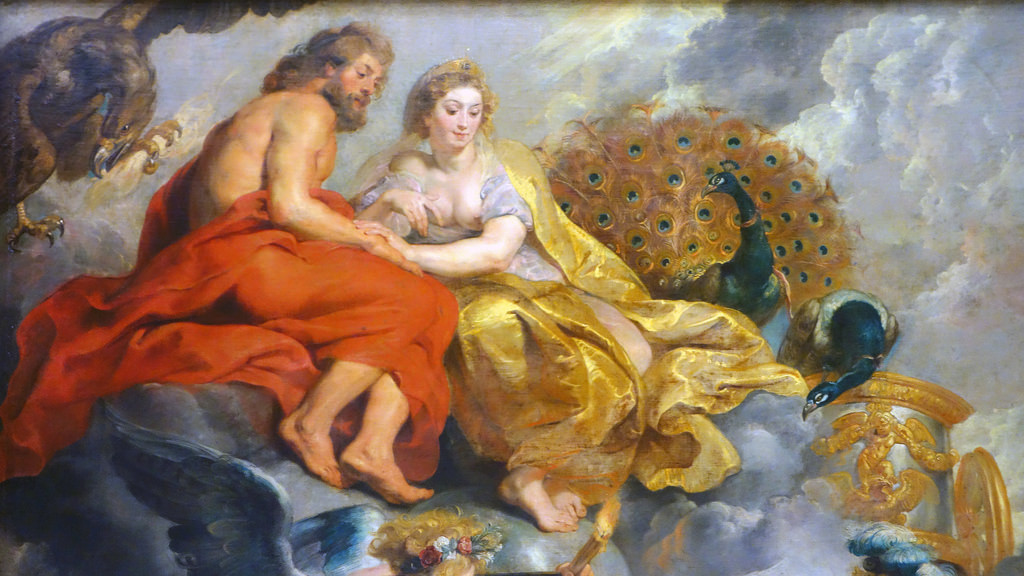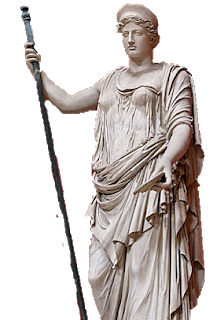Hera or Juno
the Goddess of Marriage

She was the most important and most ancient goddess of the twelve Greek gods. She was the daughter of Cronus and Rhea, sister of Zeus and his lawful wife. Together they had Ares, Ivey and Eileithyia. Ancients Greeks often identified her with the latter. Hephaestus is also considered to be their child, but another tradition says that she bore him without the union with a man. They believed the same about the birth of Typhoeus, who was a monster.
Hera had similar abilities to Zeus. She was his female form. So she is considered the goddess of heavenly phenomena. Only she has more to do with the night sky phenomena. She was a goddess that all other gods would respect. She had a strong personality and was the only one who could deal with Zeus, sometimes with greatness and courage and sometimes with female cunningness. Zeus would always think about her fury and her reactions in general. But he always had the last word.
The goddess did not have a particular mythological circle. All myths about her are linked to Zeus. These myths present her as a model of a woman. That is why she was considered a protector of marriage, childbirth and maternity. In Attica she was dedicated the month of Gameleon (January 15 - February 15), during which most weddings would take place.
Because Jupiter loved fooling around with other women, Hera had become very jealous. Her righteous women tested the effects of her jealousy. Alkmene, Semele, Leto, Io, Callisto and others have suffered from her vengeance. Her fury was directed against the children who were born by these women and Zeus. Eg. Hercules tried her pursuit from the moment he was born. Only after his death did she reconciled with him and gave him Ivey as his wife in the heavens.

Hera was also attributed warlike qualities. She participated in the Trojan War helping the Argives (Greeks) because their cities, along with Mycenae and Sparta, were very dear to her. She opposed to the gods who took the part of the Trojans or prevented her from helping the Greeks.
The oldest center of her worship was Argos. The celebrations that took place in her honor were mainly of a war like character and were called Heraea. They sacrificed one hundred cows, the sacred animal of the goddess. However, her most important place of worship was the island of Samos. There, as in other parts of Greece, took place the Holy Marriage, symbolizing its union with Zeus. In most cases, her cult was spread all over Greece.
In art, the goddess is portrayed as majestic and imposing. She wore a diadem or pole. She holds a scepter, a symbol of power, and a pomegranate, a symbol of fertility. The cuckoo was a bird that the ancients had dedicated to her and symbolized her association with Zeus.